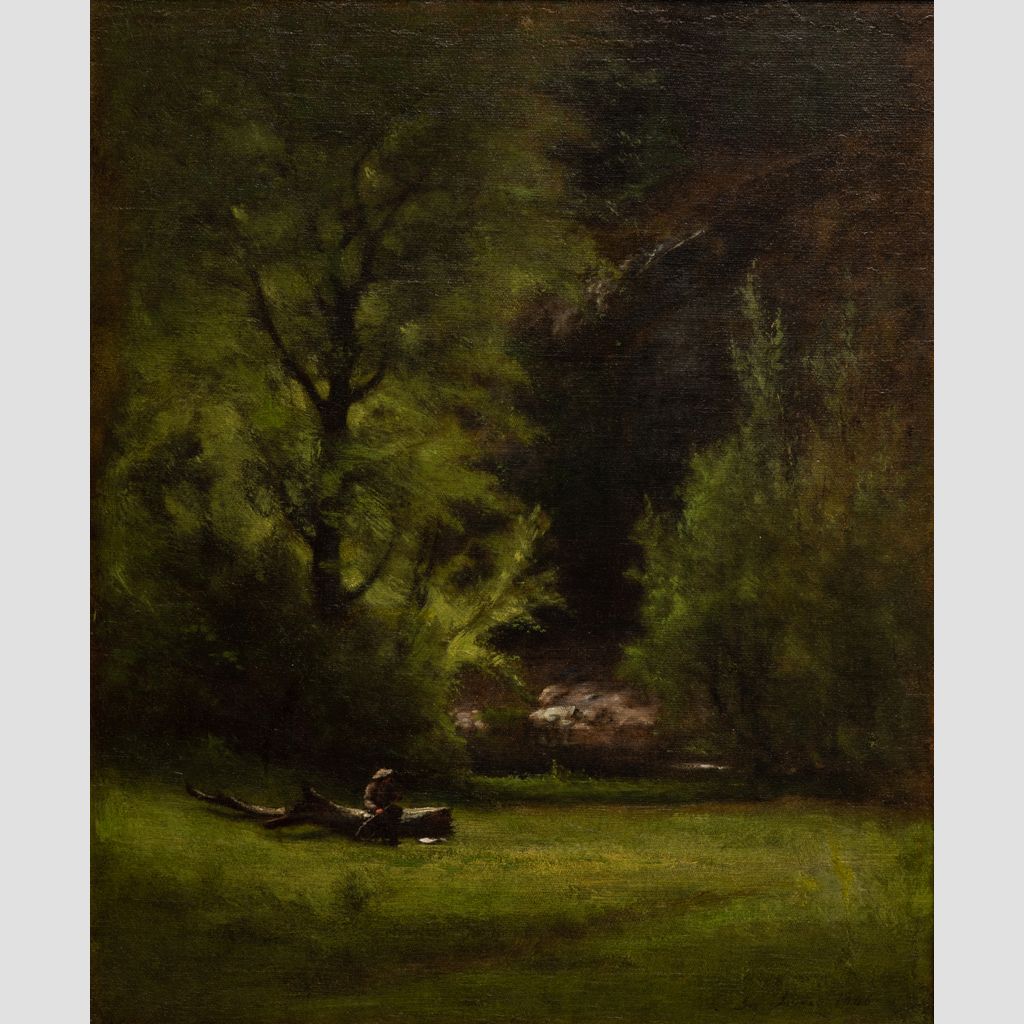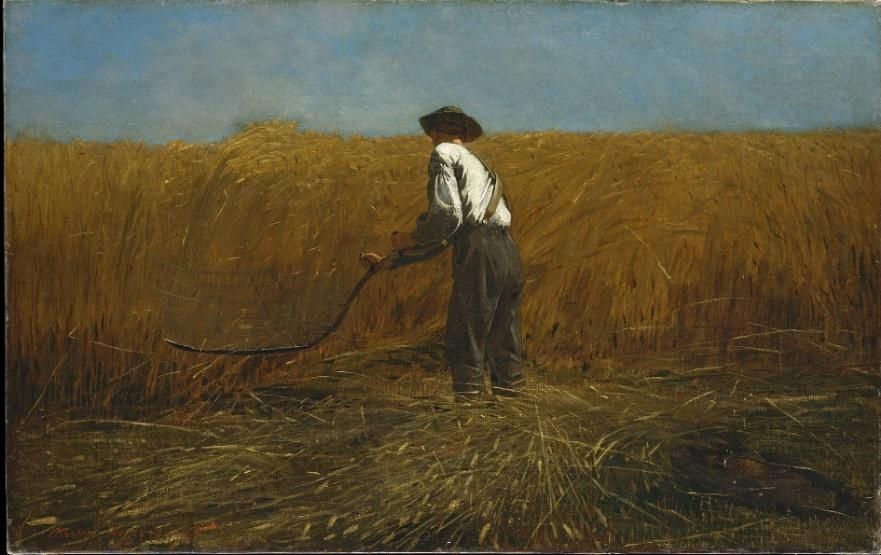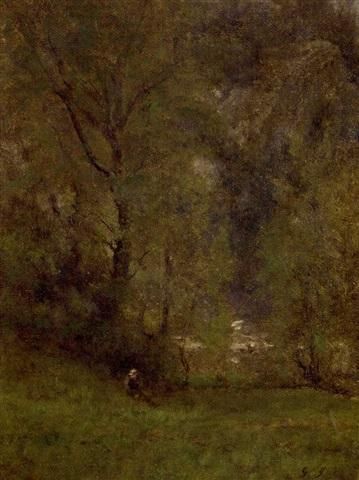
George Inness (1825–94)
In the Evening, 1866
Oil on canvas
McMullen Museum of Art, Boston College, Carolyn A. and Peter S. Lynch Collection, 2022.55

Jeffery Howe
Professor Emeritus, Art History

A major figure in the Hudson River school, Inness was one of many artists and writers influenced by the teachings of Emanuel Swedenborg, the eighteenth-century Swedish mystic. A fundamental principle of Swedenborgianism is that everything in nature corresponds to a spiritual reality. Romantic artists easily extended this mirroring principle to use nature as a vehicle for emotion and symbolic content. Whether realistic or abstract, the artist’s marks on canvas can convey ideas or feelings. The fresh naturalism and broad brushstrokes of this dark and moody landscape also reveal the influence of the French Barbizon school. Seeking simplicity and unity of effect, Inness rejected “elaborateness in detail” as it “did not gain me meaning.” Like James McNeill Whistler, Inness painted from memory to help simplify his forms.
This quiet and intimate landscape reflects Inness’s meditative vision of American nature, particularly significant as a restorative in the aftermath of the Civil War. A seated hunter, perhaps a veteran, cradles a gun on his lap in a shadowy glade as he rests at the end of the day. The subtlety of this work contrasts with the more explicit call for peace in Winslow Homer’s Veteran in a New Field of 1865 (see photo). Although he was unable to enlist due to poor health, Inness paid soldiers who joined the Union cause in his stead.

Oliver Wunsch
Assistant Professor, Art History

An otherworldly light suffuses a clearing in a dense wood, where a hunter rests on a log. Without any sky visible in the scene, it is difficult to determine the time of day. The black void on the other side of the stream suggests the darkness of night, yet the trees and grass glow with an eerie vibrancy.
Such supernatural effects became increasingly important to Inness’s work in the mid-1860s, when he worked within a small community of artists and writers in Eagleswood, New Jersey. Influenced by the painter William Page (1811–85), Inness began to explore Swedenborgian theology, according to which the visible world constituted a veil over the spiritual realm.1 Building on these ideas, Inness sought to move beyond the empirical study of nature, attempting instead to reveal a divine essence that lay outside of ordinary sensory perception.
The cultivated strangeness of this scene becomes especially apparent when we compare it with a smaller preparatory study that Inness produced for it (see image).2 While the study presents a naturalistic representation of a shady wood, the final painting establishes a tension between light and dark that charges the landscape with a paranormal atmosphere.
1. Michael Quick, George Inness: A Catalogue Raisonné (New Brunswick: Rutgers University Press, 2007), 1:175–76.
2. Important American Paintings, Drawings and Sculpture, Christie’s, New York, Thurs., Dec. 2, 2004, lot 38. Identified as a likely study for In the Evening in Quick, George Inness, 1:266.

